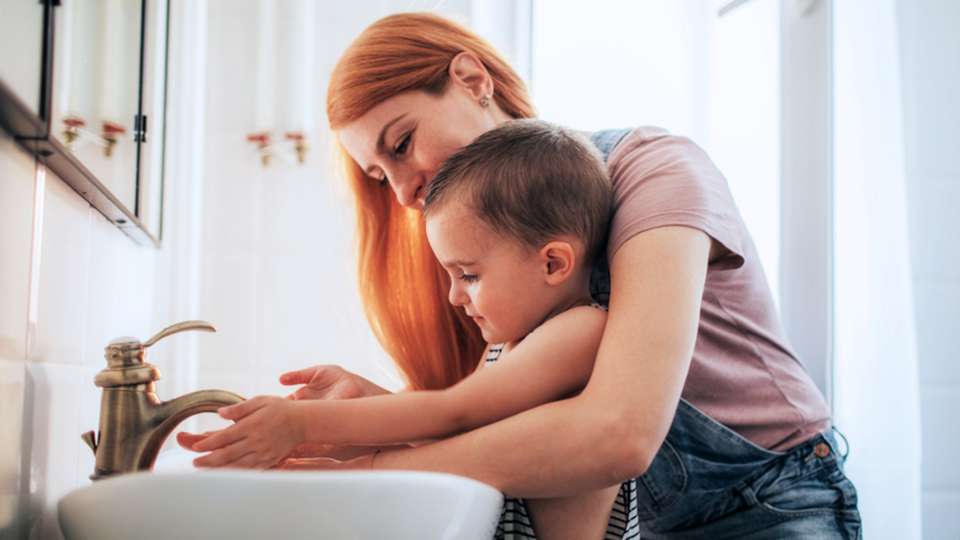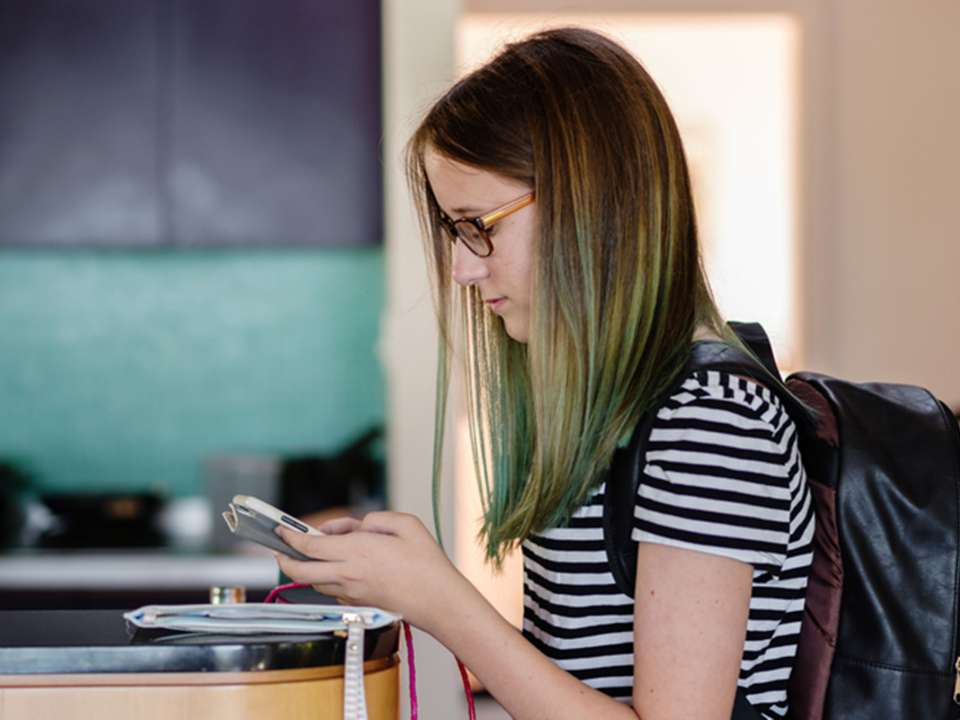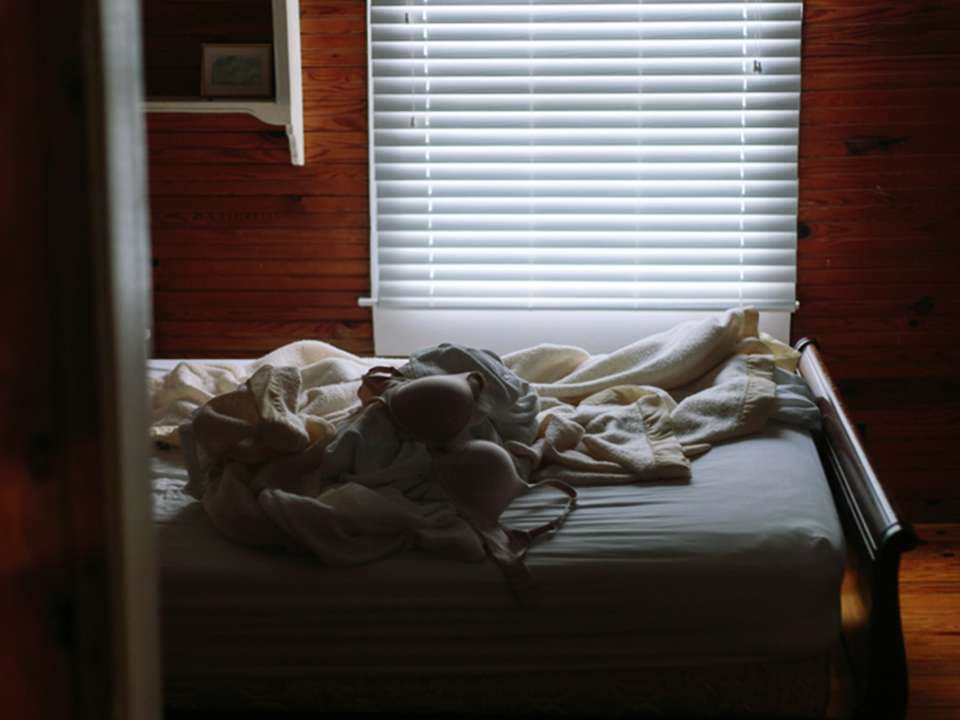
Schools are closed for in-person learning, events are canceled and social distancing is a must during the coronavirus pandemic. With everything going on, it’s totally natural for your kids to have questions — a lot of them.
“It helps to check in with kids and ask them what they already know and what they want to know,” says Dr. Won-Fong Lau Johnson, a UW Medicine clinical psychologist who works with children and their families. “As parents and caregivers, you should be proactive about having these conversations.”
To help your kids settle into this new normal, Lau Johnson shares some tips for starting the discussion, answering your children’s questions and helping your family feel safe amid the uncertainty.
Check your feelings first
Before you dive into the big COVID-19 talk with your kids, it’s important to tune into your own emotions.
This is because children take their cues from adults. If you’re overwhelmed and fearful when you talk with your kids, they may pick up on that and mirror your feelings. But if you wait until you’re calm and informed, your kids will have a reason to feel safe when discussing the topic.
“You want to ensure that you’re controlling your own anxieties first, that you’re informed and that you’re modeling that behavior for your kids,” Lau Johnson explains.
If you’re struggling to cope with your own anxieties, practice self-care, try deep breathing techniques and don’t be afraid to seek out help from a mental health expert.
It can also be comforting to learn about what’s going on from reputable sources. Think organizations like the Centers for Disease Control and Prevention, World Health Organization and Public Health — King County & Seattle.
Ask your kids what they know
Before you launch into a primer on the coronavirus, get a sense of what your children think is going on and what they’ve heard from others.
“It’s just a way to establish a baseline of what kids are understanding at this time,” Lau Johnson says. “Maybe they’ve gotten info from friends and outside sources, so you can try to build from there and make sure they have the correct facts around what is happening right now.”
This not only lets them participate in the conversation, it also gives you a starting point so you know what additional information you might need to share or what inaccuracies you need to correct.
Share age-appropriate facts
Once you do start the conversation, be sure to keep things concrete and appropriate for your child’s developmental age. You don’t want to use complicated COVID-19 terms with very young kids, but you also don’t want to talk down to or be dismissive of teens.
For preschoolers and school-age children, start by explaining what a virus is and how it spreads. Then you can share the steps your family is taking to stay safe, like washing hands often, cleaning your home and not being in contact with others.
For older children who are likely reading the news or talking about it with their peers, you can have more of a back-and-forth discussion to see what questions or worries they might have.
“Parents can bring up other facts that are positive,” Lau Johnson says. “With teens, you can broaden the conversation to what’s happening around the world in other countries where they’ve been able to control it and reduce their cases and what measures we’re taking in the U.S. to do the same.”
She also emphasizes how important it is to separate facts from misinformation and discriminatory language.
“As parents, you must talk to your children about the importance of facts and ensure that the narrative is accurate,” Lau Johnson notes. “Seeing this called the ‘Chinese Virus’ or blaming those of Asian descent is not acceptable. You have to emphasize that this virus does not discriminate.”
Validate their feelings
Despite all your best efforts, your kids might still end up feeling concerned or worried.
“That is a very normal emotional reaction to what’s going on right now, so normalizing and validating are critical,” Lau Johnson explains. “You want to be clear that this is serious and difficult but also provide ideas about what they can do about their concerns.”
If your child is upset about not being able to go to school, spend time with friends or go about their normal activities, ask them what they feel they’re missing out on and how you might be able to replicate that while social distancing.
For example, if they want to have more socializing time with their peers, suggest they write letters or video chat with friends. Encourage them to get creative, and emphasize that the best way they can contribute right now is to stay home.
“You can also be clear that this is not going to last forever,” Lau Johnson says. “We don’t know how long it will last, but it won’t be forever. It is true that some will miss graduation and some will miss seeing their grandparents, so we also must allow our children to grieve the various losses.”
Provide structure
Another way to help? Give your kids some sort of structure to help shape their day.
“There are a lot of things out of your control right now, and that will feed into your kids’ anxiety,” Lau explains. “That’s how anxiety works — everything feels overwhelming and you worry about things because they feel unpredictable.”
To counteract this, she encourages you to provide a loose schedule and routine for your children. That can mean having set times for waking up and going to bed, planned hours for remote lessons from school, giving your kids responsibilities around the house or planning out daily learning activities.
That said, remember to be kind to yourself if the schedule you planned doesn’t end up working out.
“Maybe you didn’t do that art project and you just watched movies all day — that’s totally OK,” Lau Johnson says. “Having structured options is really helpful, but you can also let yourself and your kids be off schedule once in a while to take the pressure off.”
Give them opportunities for control
Remember how anxiety can be fueled by uncertainty and unpredictability? While creating a routine for your kids can help them feel grounded during this public health crisis, that doesn’t mean they shouldn’t get a say in their new normal.
Let your children have control over something to help them feel like they have ownership over some part of their lives. You can do this by doling out decision-making responsibilities as appropriate for your child’s age. Let preschoolers pick between two learning activities, for example, and give high schoolers the chance to make a detailed at-home schedule for their week.
Schedule worry time
If your kids are having a difficult time adjusting to social distancing or are just experiencing a lot of anxiety about the situation, Lau Johnson suggests trying an intervention technique called daily worry time.
Tell your child they’re allowed 20 minutes of designated worry time each day: 10 minutes in the morning and 10 minutes in the evening. During this scheduled time, they can only focus on their concerns, anxieties and negative thoughts.
“The idea is after a while they’ll run out of worries, start recycling them and eventually become bored of them,” Lau Johnson explains. “They’ll start to realize that they don’t actually need to spend the whole day worrying about the same thing.”
Worry time is a great way to validate your child’s feelings but keep them from spiraling out of control. That said, if you’re noticing warning signs like constant anxiety about the coronavirus that borders on obsessive, check in with your kid to see how they’re feeling or talk with your child’s pediatrician, family medicine doctor or behavioral health professional.
Be a role model
Perhaps the simplest way to help your family cope during this difficult time is to lead by example.
When you’re talking about the situation with others, remain calm and stick to the facts. Explain to your kids the steps you’re taking as a family to stay safe and connected with friends and loved ones. Set and follow a routine. Offer help to others, and seek out help if you need it too.
“This won’t last forever, but everyone does need to lower their expectations in a lot of ways. Routines are drastically changed, and everyone must take collective responsibility to adhere to this new normal during the pandemic,” Lau Johnson says. “Think about reaching out to each other or a therapist if you need it. Together, you and your kids can figure out what you want the next couple of months to look like, as much as is in your control.”
The info in this article is accurate as of the publishing date. While Right as Rain strives to keep our stories as current as possible, the COVID-19 pandemic continues to evolve. It’s possible some things have changed since publication. We encourage you to stay informed by checking out your local health department resources, like Public Health Seattle King County or Washington State Department of Health.

 Healthy ideas for your inbox
Healthy ideas for your inbox





